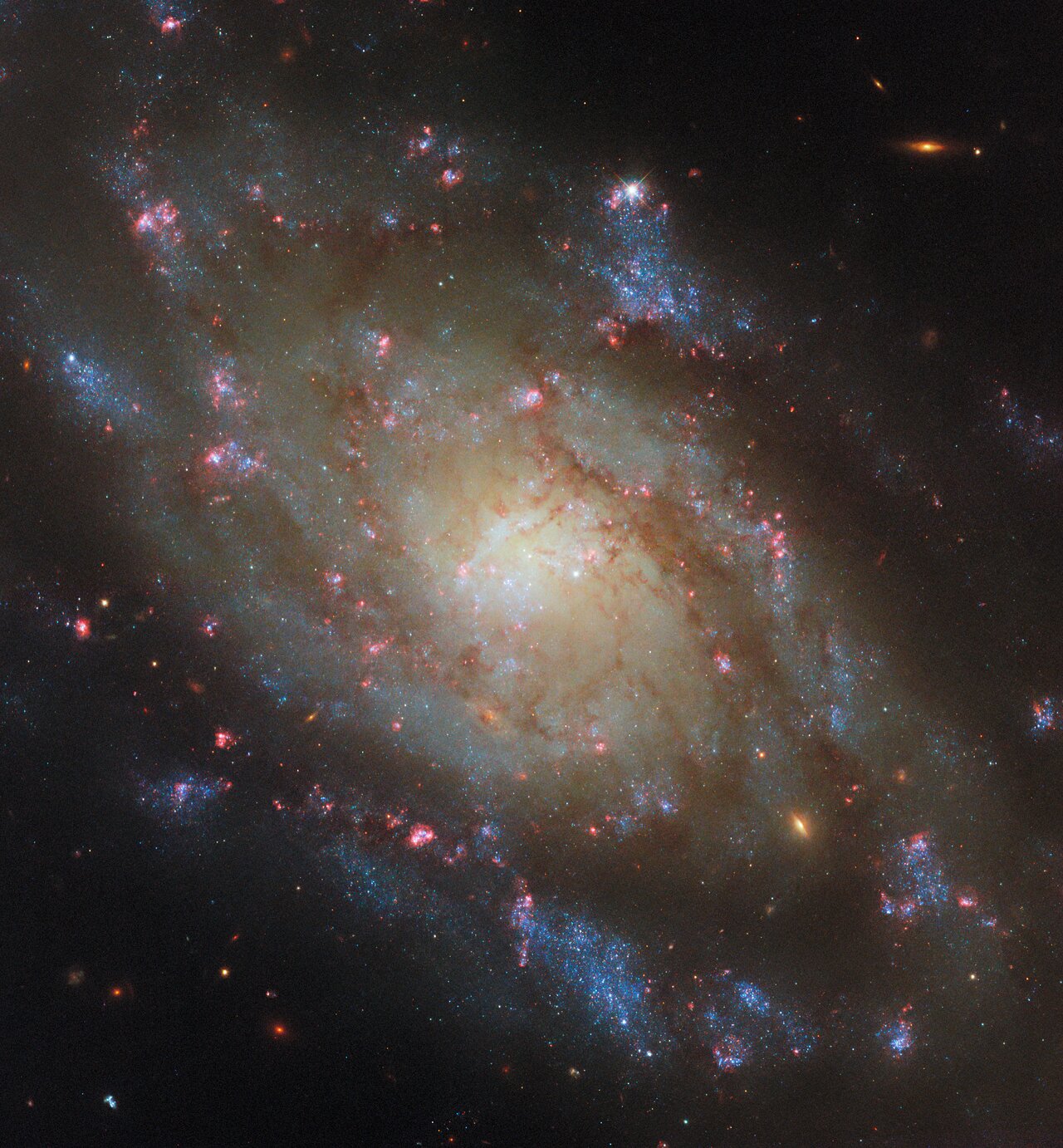Working with the Hubble telescope astronomers have shared a new image. It shows a bright galaxy NGC 5042.

NGC 5042 is located about 48 million light-years away from Earth toward the constellation Hydra. It is classified as a transitional type spiral galaxy. Such objects occupy an intermediate position between galaxies with a bar, like our Milky Way, and galaxies without bars.
To get a portrait of NGC 5042, Hubble observed it in six wavelength ranges, from ultraviolet to near-infrared. The center of the cream-colored galaxy is filled with old cold stars, but the spiral arms, on the contrary, are decorated with scatterings of young blue stars.
Perhaps the main feature of NGC 5042 is the “collection” of bright pink clouds scattered along its spiral arms. These clouds are referred to as H II regions. They are clouds of hot plasma whose extent can be measured in hundreds of light-years. Their characteristic pink color is due to the glow of hydrogen atoms ionized by powerful ultraviolet radiation. Its source is newborn luminaries formed inside H II regions.
H II regions occur in vast clouds of hydrogen gas, and only hot and massive stars produce enough high-energy light to make it glow. Stars capable of creating H II regions live only a few million years — a mere blink of an eye by galactic standards. So, in fact, the Hubble image is a portrait of a fleeting day in the life of this galaxy.
As for the elongated yellow-orange objects scattered throughout the image — these are background galaxies much farther away than NGC 5042. The image also included a much closer object: a star in our Milky Way. It is at the top of the frame and can be identified by the diffraction rays.
Earlier we reported on how Hubble lifted the veil of mystery of the Veil Nebula.
According to Esahubble


